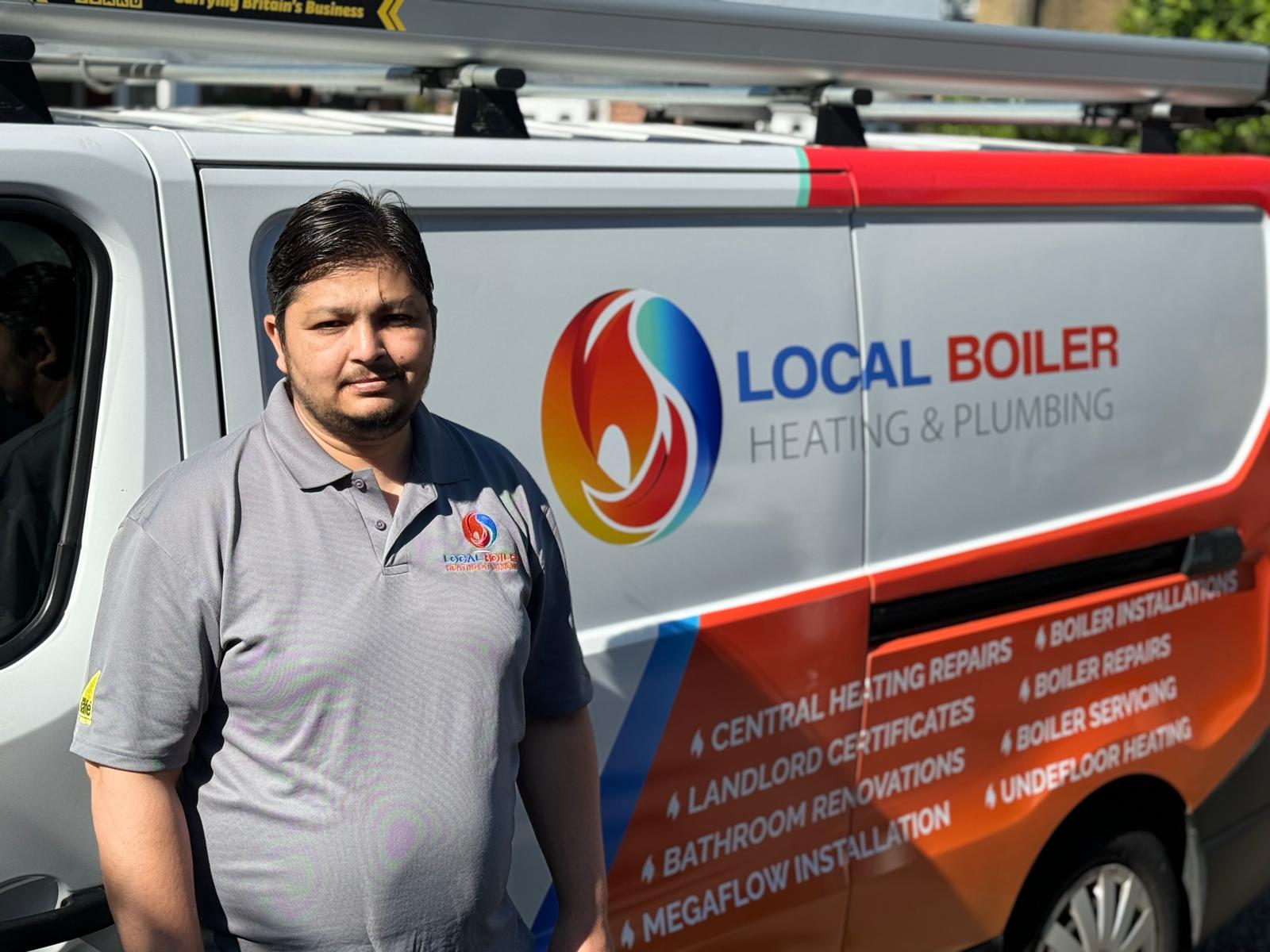Introduction
“How did you learn to renovate homes?” they ask.
I ask that same question all the time especially to the heating and plumbing teams I hire.
It’s not a question I mind answering. In fact, I relish it, because the journey wasn’t linear. I didn’t pop out of the womb with architectural sketches in one hand and a toolbelt in the other. The truth is far more mundane, yet more exciting: I just got curious. And I had an urge to create a space that felt truly like home.
At first, renovation felt like it was all about paint colors, backsplash tiles, and trendy light fixtures. But as I dug deeper, I realized the real magic isn’t in what you see, it’s in what you don’t.
Hidden beneath hardwood floors and tiled kitchen walls are heating pipes, plumbing systems, insulation, and mechanical miracles that make a house warm, functional, and safe.
I didn’t always understand that side of things. But once I got serious about home renovation, I realized how vital heating and plumbing systems were—particularly underfloor heating and unvented cylinders. These weren’t just “nice-to-haves” , they were essential.
The Beginning
My first renovation project was also my first home—a modest two-bedroom flat I bought with a mix of savings and family support. It wasn’t glamorous: dated carpets, a leaky tap, and wallpaper that had survived at least three previous owners. But the place had good bones.
With no formal training and no hesitation, I dove headfirst into the project. I binge-watched DIY videos, read home improvement blogs late into the night, and visited the local hardware store so often I knew the staff by name.
I painted walls, replaced light fixtures, and even tried my hand at tiling the bathroom. Watching a dull, lifeless flat transform into a cozy space felt magical.
Then I made a mistake that changed everything.
I picked up a hammer and knocked down a non-load-bearing wall between the kitchen and the living room. I was chasing that open-plan aesthetic but I had no idea that a labyrinth of water pipes lay hidden behind it.
The first swing of the hammer? A stream of water erupted like a geyser.
I had hit a pipe that supplied water to the upstairs unit. Within seconds, my DIY confidence was underwater—literally.
I scrambled to shut off valves, grabbed buckets, and panicked. Eventually, I called a plumber. He fixed in minutes what I had wrecked in hours.
Lesson learned: Not all renovations are created equal.
All Renovations Aren’t Created Equal
Some home improvements are surface-level: fresh paint, new countertops, maybe even updated flooring. If you’ve got vision, tools, and a bit of patience, you can take those on yourself.
But not all renovations are like that.
Projects involving plumbing and heating require a completely different level of skill and understanding. And in those cases, “Do it yourself” can quickly turn into “Undo it quickly.”
Some systems demand professionals. And plumbing and heating top that list—not just for efficiency, but for safety and long-term peace of mind.
Learning to Look Beneath the Surface: Heating and Plumbing
After that infamous pipe incident, I began paying more attention to the systems I couldn’t see: plumbing, heating, ventilation. These were the house’s arteries and veins. And I had completely ignored them in my renovation plans.
My first real introduction to modern heating came when I moved into a home with underfloor heating. I didn’t install it—it came with the property—but the first time I stepped onto warm tiles during a freezing winter morning, I was sold.
I had to know more.
Was it electric or water-based? Could it be added to old homes? How did it actually work?
I spoke to engineers, read case studies, and dove deep into how heating systems function. The more I learned, the more I admired the elegance and efficiency of well-designed setups.
The same went for unvented cylinders. I’d always lived with traditional vented systems, but once I experienced consistent hot water pressure at a friend’s house, I knew something had changed.
I later discovered that unvented cylinders:
- Deliver high-pressure hot water directly from the mains.
- Require no cold-water tank in the attic.
- Operate quietly and efficiently.
- Are ideal for homes with multiple bathrooms.
None of this came from textbooks.
Their team didn’t just install systems; they explained them. They invited you into the process. You felt like a partner, not just another job on the calendar.
Discoveries Through Details
With each project, I began noticing things I’d missed before:
- Drafts near floorboards.
- Radiators that didn’t heat evenly.
- The faint whistling of cooling pipes at night.
It was like switching on a new sense.
I got into insulation and airtightness. I learned that radiators under windows weren’t always a smart idea. I realized that the layout of your plumbing can affect water pressure throughout the entire house.
This is where I started bringing in the pros more often.
Not because I couldn’t DIY—but because I respected what could go wrong if I got it wrong.
Systems like underfloor heating or unvented cylinders need precision. A bad install can lead to inefficiencies, energy waste, or even damage.
Working with LB Group, I stopped seeing plumbing and heating as obstacles to the fun stuff. They were part of the fun—systems to be optimized, improved, and respected.
Their honesty during consultations impressed me. They’d tell me if something wasn’t worth it. They’d suggest alternatives that cost less and are a difficult part of home renovation. That kind of straightforwardness is rare—and deeply appreciated.
Surprising Lessons Along the Way
Home renovation taught me more than just how to swing a hammer. Here are some of the lessons I didn’t expect:
- A small leak behind a wall can silently cause thousands in damage.
- A poorly installed radiator can throw off your entire heating system.
- Water pressure isn’t just about pipe size—it’s about gravity, tank height, and system design.
Unvented cylinders have been a revelation.
They provide stable water pressure without relying on old-fashioned gravity-fed systems. They’re cleaner, more efficient, and ideal for modern homes.
I also learned to listen to homes:
The hum of a boiler. The gurgle of a drain. The warm whoosh when heating kicks in. These tiny signals can tell you when systems are thriving—or when they’re ready for an upgrade.
Most importantly, I learned the value of working with people you can trust.
You don’t have to do everything yourself. In fact, you shouldn’t.
Tips for Upcoming Renovators
If you’re just starting out, here’s my best advice:
1. Learn the Basics
Understand how your home works.
Know where your shut-off valves are. Learn how to bleed a radiator. Familiarize yourself with insulation types. These small things can save you big headaches.
2. Ask for Help When You Need It
DIY is empowering—but know your limits.
Things like underfloor heating, boiler servicing, and unvented cylinder installations should be left to licensed professionals.
3. Don’t Overlook the Invisible
Budget for what’s behind the walls, not just the finishes.
Too many people install new flooring without asking: “Should I put in underfloor heating first?”
That’s a missed opportunity.
What feels like a luxury today becomes a necessity tomorrow.
4. Work With Honest Tradespeople
Follow your instincts.
If a tradesperson seems evasive or dismissive, walk away.
Conclusion
Renovating homes taught me more than I ever imagined.
I thought I was learning to build.
But really, I was learning to listen, to observe, and to ask the right questions.
True comfort doesn’t come from marble countertops or designer wallpaper. It comes from systems working quietly, efficiently, and reliably in the background.
So when someone asks, “How did you learn to renovate homes?”—I smile.
Because the truth is:
I learned by doing. By failing. By listening. By asking.
And by working with experts who made the invisible parts of a home feel just as important as the visible ones.
If you’re on your own renovation journey—take your time.
Be curious.
And don’t underestimate the power of systems like underfloor heating, pressurized water, or simply having a dependable team like LB Group by your side.
You’ll thank yourself, especially on those freezing mornings when your feet hit a floor that’s warm, thanks to the heating system you almost didn’t install.
Frequently Asked Questions
1. Do I need professional training to renovate a home?
Not necessarily. Many aspects of home renovation can be self-taught through hands-on experience, online tutorials, and research. However, certain systems—like plumbing, electrical, and heating—should be handled by professionals to ensure safety, compliance, and efficiency.
2. What’s the difference between underfloor heating and traditional radiators?
Underfloor heating provides consistent warmth by heating from the ground up, eliminating cold spots and often allowing for better energy efficiency. It also frees up wall space by removing bulky radiators. While radiators heat air in one location, underfloor systems distribute heat more evenly.
3. Can underfloor heating be installed in older homes?
Yes, underfloor heating can be installed in both new and existing homes. However, it may require modifications to the subfloor or insulation. It’s best to consult a heating specialist (like those at LB Group) to assess feasibility and recommend the best system—electric or water-based—for your property.
4. What is an unvented cylinder, and why should I consider it?
An unvented cylinder is a hot water storage system that operates directly from the mains water supply, providing high-pressure hot water to all taps and showers without the need for a cold water tank in the loft. They’re especially useful in homes with multiple bathrooms or high hot water demand.
5. Is it worth upgrading an old plumbing system during renovation?
Yes. Older plumbing can be inefficient, prone to leaks, and incompatible with modern heating systems. Renovating is the ideal time to upgrade your pipework, improve water pressure, and install more energy-efficient components like thermostatic valves or new boilers.

Sunny Saini is a certified heating engineer with over 15 years of experience in maintaining and repairing boilers. He specializes in diagnosing complex boiler issues and providing reliable solutions to ensure homeowners stay warm and comfortable throughout the year.





![]=](https://localboiler.co.uk/wp-content/uploads/2024/05/Untitled-design-96-300x300.jpg)